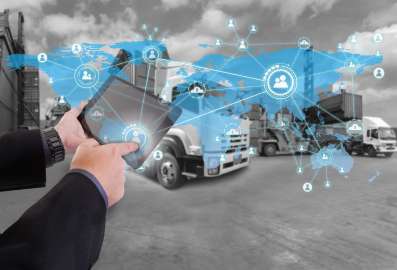Safeguard operations
In the transport and logistics industry, safeguarding operations means protecting the movement of goods, people and data—without interruption. As fleets become smarter and infrastructure more connected, cyber risks multiply across autonomous systems, tracking platforms and supply chain hubs. NIS2 compliance adds regulatory urgency, while digital transformation opens new threat vectors that traditional defenses can’t handle. A single breach can halt deliveries, compromise cargo and erode customer confidence.
Key Security Challenges:
• Monitoring and protecting logistics operations in real time, across fleets, warehouses and data centers.
• Securing supply chain systems to ensure uninterrupted service and prevent fraud or operational disruptions.
With Cyberquest SIEM, CQ Automation, Netalert NDR, CQ Threat Intelligence and CQ AI Assistant, you gain the tools to secure every mile, keeping your operations resilient, compliant and in motion.
Scenario:
A logistics provider detects irregularities in shipment routing and order processing. Cyberquest correlates data from the company’s ERP system, transportation management software and network traffic. Netalert identifies unauthorized communication with key routing devices, while UEBA flags a user profile exhibiting abnormal access behavior. Automated playbooks isolate the threat, preserving system integrity and preventing delivery delays or data tampering.

Why Cyberquest and Netalert?
-
NetAlert provides real-time Layer 2/3 visibility without relying on agents, making it ideal for diverse and mobile logistics environments.
-
Correlates data from logistics platforms, ERP systems and network activity to detect anomalies such as routing manipulation or fraudulent transactions.
-
Built on a streamlined architecture that supports high performance and responsiveness even across globally distributed operations.
Top 5 Concerns
Achieving NIS2 compliance & readiness
Cyber risks to smart fleets & autonomous vehicles
Digital transformation risks
Securing critical infrastructure
Vehicle & cargo tracking vulnerabilities
Achieving NIS2 compliance & readiness
Transportation & Logistic companies must adhere to strict cybersecurity regulations, including NIS2, to safeguard critical infrastructure and maintain trust. As regulatory landscapes evolve, staying compliant requires continuous monitoring and a proactive security approach.
Strengthen cybersecurity protocols, conduct regular NIS2 compliance checks and safeguard critical transportation infrastructure.
Key Dangers & Risks:
Cyber risks to smart fleets & autonomous vehicles
With the rise of smart fleets and autonomous vehicles, cyberattacks can now directly impact transport safety and efficiency. The integration of IoT sensors and real-time tracking systems further expands the attack surface, requiring proactive security measures.
Deploy endpoint security, secure IoT connectivity & integrate AI-based threat monitoring.
Key Dangers & Risks:
Digital transformation risks
As transportation or logistic companies adopt new technologies like IoT, AI and automation, they face new security challenges. These innovations, while improving efficiency, can create vulnerabilities if not properly secured. Cybercriminals can exploit gaps in system integration and legacy infrastructure.
Update legacy systems, implement strong IoT security measures and integrate advanced cybersecurity practices into automation.
Key Dangers & Risks:
Securing critical infrastructure
Modern transportation relies on interconnected systems, from air traffic control to railway networks and smart ports. A cyberattack can cripple logistics, delay deliveries and endanger passenger safety. As digital transformation accelerates, securing operational technology (OT) becomes as crucial as protecting IT networks.
Implement AI-driven threat detection, network segmentation & real-time system monitoring to prevent cyber disruptions.
Key Dangers & Risks:
Vehicle & cargo tracking vulnerabilities
Transportation and logistic systems rely heavily on GPS and tracking systems to monitor vehicles, shipments and cargo. These systems are increasingly targeted by cybercriminals who can manipulate data or disrupt services, leading to delays and cargo theft.
Secure GPS systems, use blockchain for cargo tracking and ensure end-to-end visibility with real-time monitoring.
Key Dangers & Risks:
Unique advantages:
-
Agentless, real-time visibility into distributed logistics environments.
-
Cross-platform correlation between logistics systems and business operations.
-
Fast, automated threat response that protects continuity across the supply chain.

